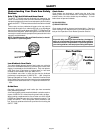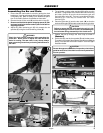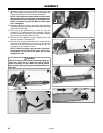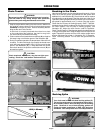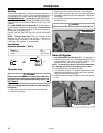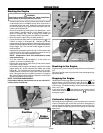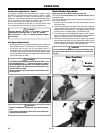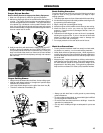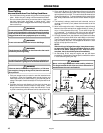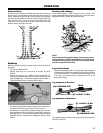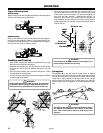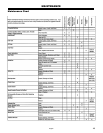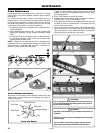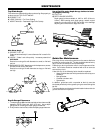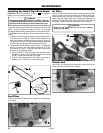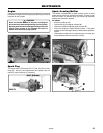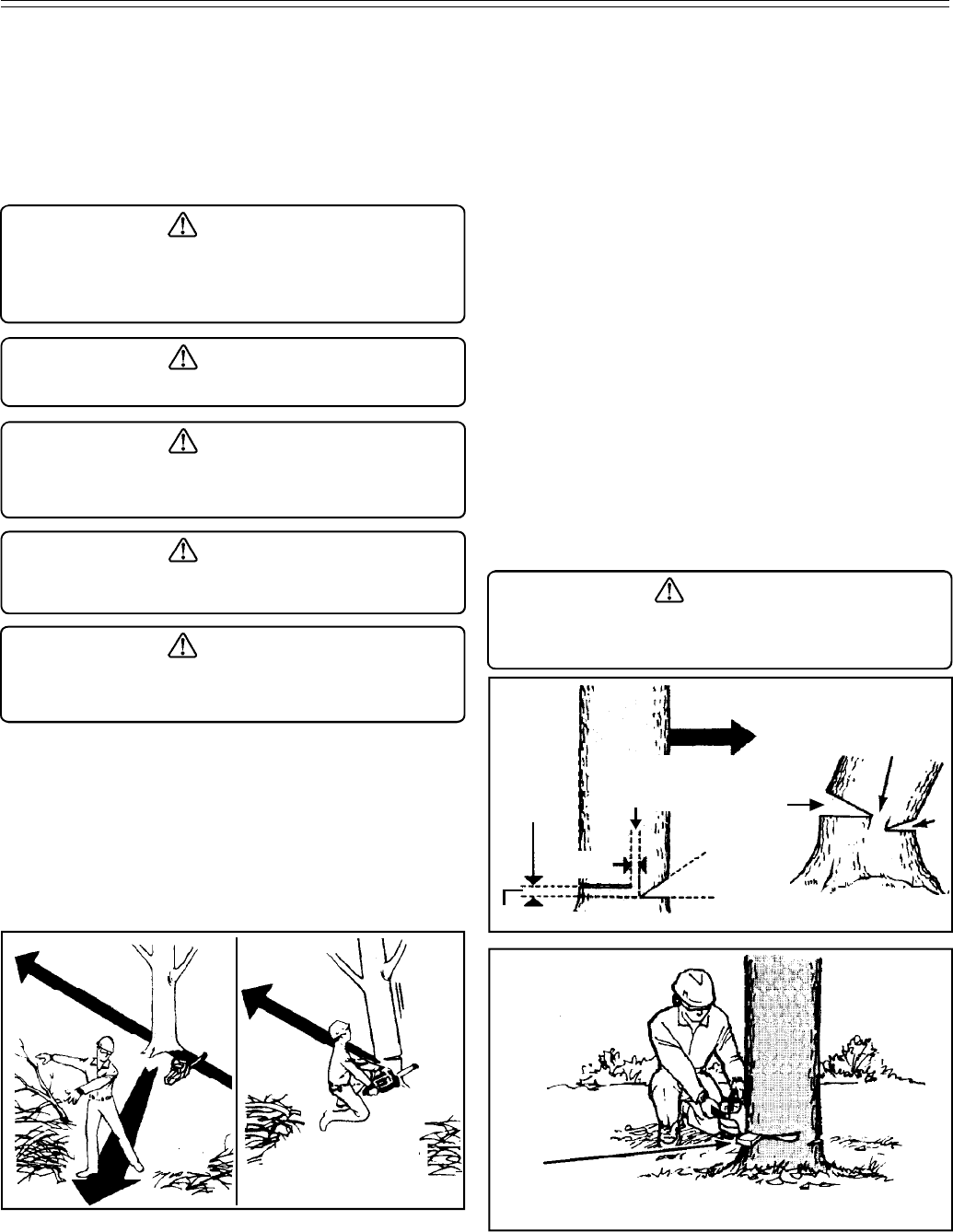
16 English
OPERATION
A
B
B
Tree Felling
Unusual Hazardous Tree Felling Conditions
• Do not fell trees during periods of high wind or heavy precipi-
tation. Wait to do your cutting until the hazard has ended.
• Do not cut down trees having an extreme lean or large trees
that have rotten limbs, loose bark, or hollow trunks. Have
these trees pushed or dragged down with heavy equipment,
then cut them up.
1. Pick your escape route (or routes in case the intended route
is blocked). Clear the immediate area around the tree, and
make sure there are no obstructions in your planned path of
retreat. Clear path of safe retreat (A) 45° from planned line of
fall (B).
2. Consider the force and direction of the wind, the lean and
balance of the tree, and the location of large limbs. These
things influence the direction in which the tree will fall. Do not
try to fell a tree along a line different from its natural line of fall.
WARNING
If the tree starts to fall in the wrong direction, or if the saw
gets caught or hung up during the fall, leave the saw and
save yourself!
WARNING
Check the tree for damaged or dead branches that could
fall and hit you during felling.
WARNING
Do not cut trees near electrical wires or buildings.
WARNING
Periodically glance at the top of the tree during the backcut
to assure the tree is going to fall in the desired direction.
WARNING
Do not cut trees that have an extreme lean or hollow trunks.
Proper notching and back cutting cannot be performed on
trees with extreme lean or hollow trunks. Have these trees
dragged down with heavy equipment prior to cutting.
C
E
F
G
3. Cut a notch (C) about 1/3 the diameter of the trunk in the side
of the tree. Make the cuts of the notch so they intersect at a
right angle to the line of fall. This notch should be cleaned out
to leave a straight line. To keep the weight of the wood off the
saw, always make the lower cut of the notch before the upper
cut.
4. The backcut is always made level and horizontal, and at a
minimum of 2 inches (5 cm) above the horizontal cut of the
notch (D).
5. Never cut through to the notch. Always leave a band of wood
between the notch and back cut (approximately 2 inches (5
cm) or 1/10 the diameter of the tree). This is called "hinge" (E)
or “hingewood.” It controls the fall of the tree and prevents
slipping or twisting or shoot-back of the tree off the stump.
6. On large diameter trees, stop the back cut (F) before it is deep
enough for the tree to either fall or settle back on the stump.
Then insert soft wooden or plastic wedges (G) into the cut so
they do not touch the chain. The wedges can be driven in, little
by little, to help jack the tree over.
NOTE:
When bucking or felling with a wedge, it may be necessary
to remove the Safe-T-Tip® anti-kickback device to allow
the bar to be drawn through the cut. After the cut is
complete, the tip should be replaced immediately.
7. As tree starts to fall, stop the engine and put saw down
immediately. Retreat along cleared path, but watch the action
in case something falls your way.
2" (5 cm)
2" (5 cm) or
1/10 DIA
WARNING
Never cut through to the notch when making a backcut.
The hinge controls the fall of the tree, this is the section of
wood between the notch and backcut.
D
E



